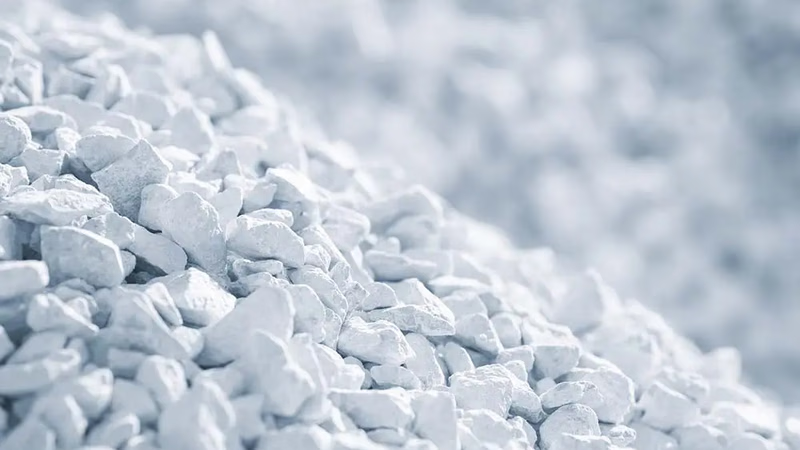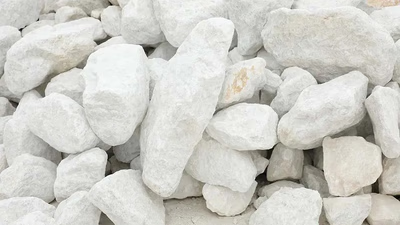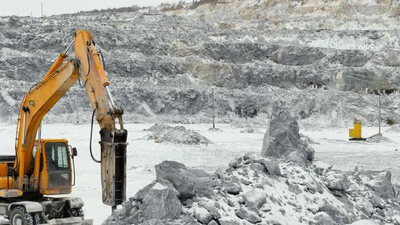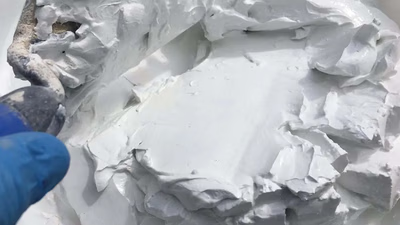
Lime production in West Asia: key players and market insights.
Lime is one of the most important raw materials in the cement industry, steel industry, chemical industry and construction industry, and many products are used in these industries. Due to the growing need for construction in West Asia and the development of the cement industry, the demand for lime in this region is increasing. Factors such as population growth, infrastructure development, the need for housing and the development of civil projects increase the use of lime. In the West Asian lime market, there are local producers and importers from other countries. Countries such as Saudi Arabia, Iran, Iraq, Qatar, Oman, Turkey and Egypt are known as the largest producers and exporters of lime in this region.
West Asia is home to some of the largest limestone deposits in the world. Saudi Arabia is one of the largest producers of lime in the world and has rich deposits of lime. Areas such as the Hafr al-Batin region and the Ha'el region in Saudi Arabia have significant lime deposits. Oman also has abundant lime reserves. The area called "Jabal Al-Akhdar" located in the north of Oman is known as one of the largest limestone areas in West Asia. Iran also has significant resources of lime. Provinces and regions such as Gilan, Mazandaran, Fars, East Azerbaijan and South Khorasan in Iran have important lime reserves. Qatar also has significant lime reserves among West Asian countries. Areas such as Ras Lafan region and the northern region of Qatar have important lime deposits.
Due to the large number of lime producers in West Asia, the competition in the market is very intense. This issue can lead to pressure on prices as well as product quality. Solutions such as improving product quality, improving production processes, reducing production costs and investing in research and development can help increase competitiveness. Transporting lime from the producer to the final destination may be associated with challenges such as inadequate infrastructure, port and border issues, and security issues. To solve these problems, investing in improving transportation infrastructure, creating effective customs facilities, and strengthening cooperation between countries can be useful.
White mountains, located in Balochistan and Khyber Pakhtunkhwa province of Pakistan, have very rich deposits of lime. Pakistan exports its lime to other countries in the region and has a significant position in the Middle East lime market. Areas such as Al-Najaf, Karbala and Samawa in Iraq have significant lime reserves. Lime produced in Iraq is used as a raw material in the cement and construction industry. Türkiye is also an important market for lime in the Middle East. Areas such as Istanbul, Izmir, Konya and Samsun in Turkey have lime deposits. Lime produced in Turkey is used as a raw material in cement industry, chemical industry and construction industry.
Different laws and regulations in countries, problems related to the translation of commercial documents and currency differences can lead to problems in the international trade of lime in West Asia. To solve these problems, international trade facilities such as facilitating international settlement, facilitating the translation of commercial documents and creating more unified laws and regulations between countries can be useful. Some regions in West Asia are facing security problems that can affect the lime trade. put Security measures such as improving security in production and transportation areas, cooperating with security forces and creating favorable conditions for investment can help in increasing trust and reducing security risks.
Considering the fierce competition in the West Asian lime market, the quality, price and supply of raw materials are among the important factors in determining the position of each country in this market. In order to attract customers and maintain their market, producers must offer good quality and have the ability to supply raw materials. International lime trade is also very active in West Asia. Lime producing countries try to generate income and conquer new markets by exporting their lime to other countries. At the same time, countries that need a lot of lime use imports to meet their needs.
-

The lime market in West Asia is experiencing significant growth due to increasing demand from the construction, cement, and chemical industries. Key factors driving this demand include population growth, infrastructure development, and civil projects. Major producers in the region include Saudi Arabia, Iran, Iraq, Qatar, Oman, Turkey, and Egypt, which are known for their rich limestone deposits. Saudi Arabia stands out as a leading global producer with substantial reserves in regions like Hafr al-Batin and Ha"el. Oman’s Jabal Al-Akhdar is also notable for its limestone resources. The competitive landscape is intense due to numerous local producers and importers, which can lead to price pressures and quality challenges. To enhance competitiveness, improvements in product quality and production processes are essential. Transportation issues such as inadequate infrastructure and security concerns pose additional challenges for lime distribution.
Countries like Pakistan also play a role in the regional market by exporting lime to neighboring nations. Regulatory differences and security issues further complicate international trade within West Asia. Addressing these challenges through better customs facilities and unified regulations can facilitate smoother trade operations. Ultimately, maintaining high quality and competitive pricing will be crucial for producers aiming to secure their market position amidst fierce competition. "
-

China, India, the USA, Russia, and Brazil are the largest consumers of lime globally, driven by their industrial sectors such as construction, steelmaking, and agriculture. These countries possess significant lime mineral reserves and typically meet their domestic demand through local production. However, they may also import lime to satisfy higher demand. Engaging in industrial exhibitions related to the lime industry offers opportunities for networking with international buyers and exchanging valuable insights. The process of lime extraction involves identifying mines, conducting geological explorations, and utilizing various methods for extraction and processing. After extraction, lime is crushed, prepared, and packaged for distribution to various consumer industries. E-commerce platforms like B2B marketplaces facilitate direct connections between lime producers and global buyers by allowing them to publish product specifications and negotiate deals. Additionally, leveraging foreign trade services can enhance access to international markets. Establishing business relationships through conferences and industry events is crucial for expanding market reach.
-

China, Russia, and India lead global lime production, with significant reserves in regions like Henan, Ural, and Rajasthan. The United States and Japan also contribute notably to lime supply. Various forms of lime, including raw, hydrated, calcined, and transgenic lime, serve diverse industrial applications such as construction and agriculture. Hydrated lime is particularly in demand due to its versatility. High-quality lime, known as "White Lime," is sourced from Italy"s Carrara region and Mexico"s Yucatan region, recognized for their purity and exceptional properties. Vermont in the U. S. and Finland"s Pargas area also produce high-quality lime used across multiple industries.
Understanding these regional strengths can enhance trade opportunities within the Middle East and West Asia markets. "
-

Lime, a crucial chemical compound (CaO), is extensively exported by major producers like the US, China, India, and Brazil. Its significant export value stems from its diverse applications across various industries. In construction, lime is essential for producing cement, mortar, and other building materials. The cement industry heavily relies on lime as a raw material during the calcination process, making it vital for concrete production and infrastructure development. Additionally, lime plays a key role in the steel industry as an alloying agent that helps purify steel by absorbing impurities during refining. Its use extends to glass manufacturing, where it regulates properties and enhances production processes. Furthermore, lime is utilized in water treatment facilities as a purifying agent and in the paper industry for bleaching and pH control. Countries with abundant lime resources can leverage these applications to boost their export capabilities and meet international demand effectively.




